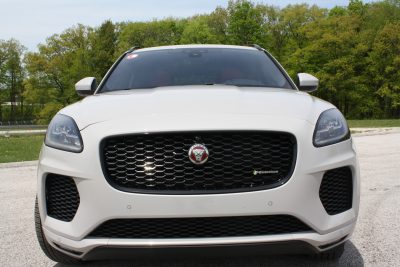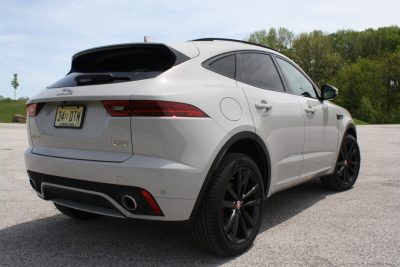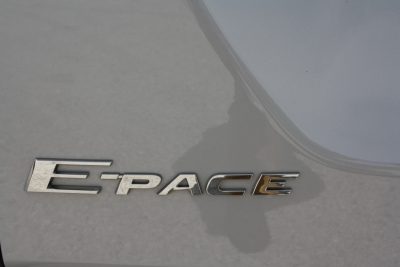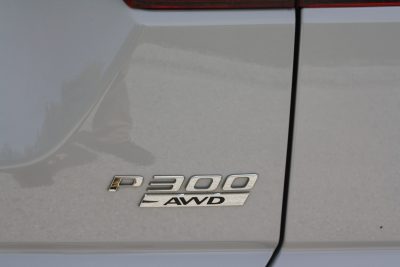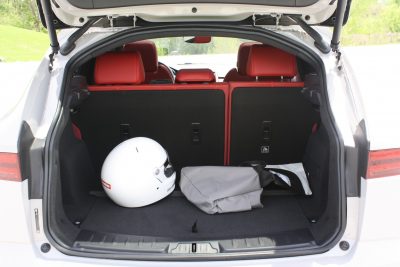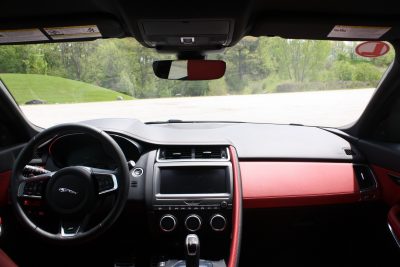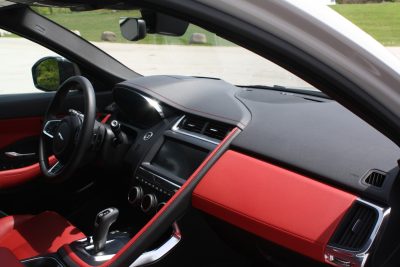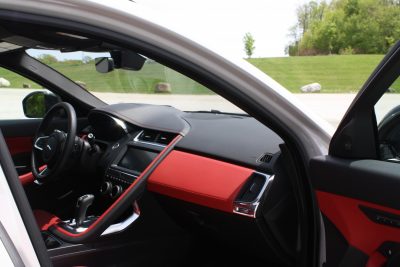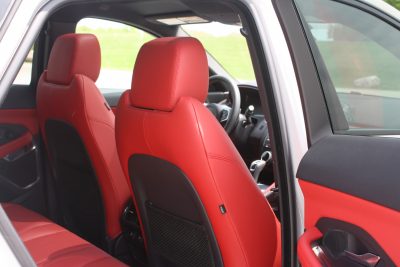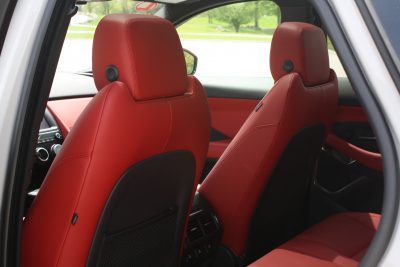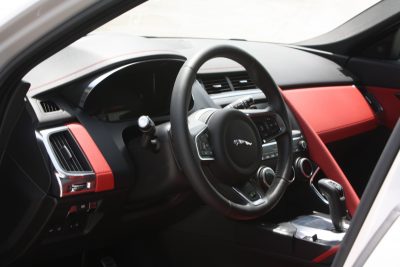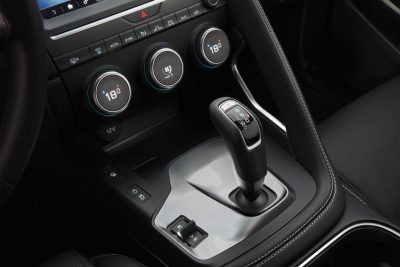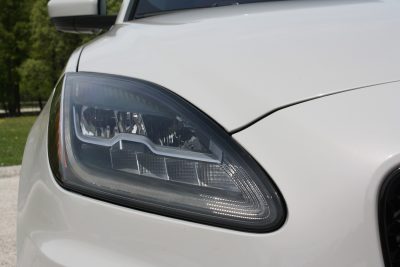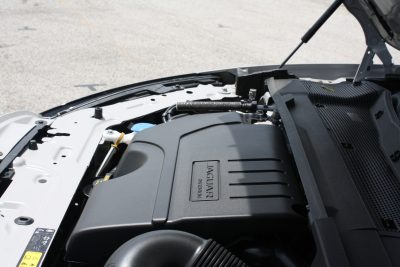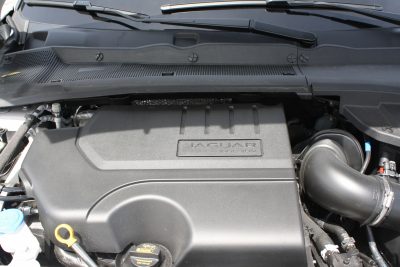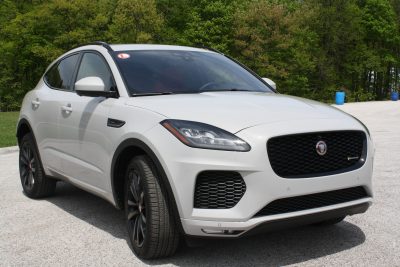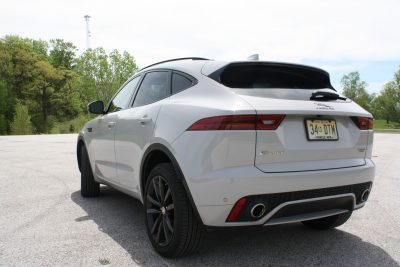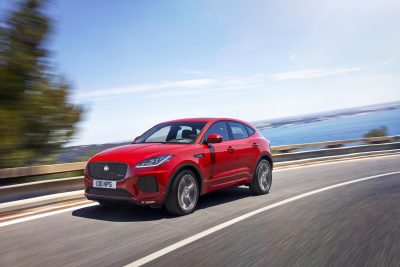When the 2018 Jaguar E-Pace arrived on the scene, it brought a breeze of inevitability to the storied British luxury brand.
Once known for stubbornly resisting the SUV craze with its car-centric lineup, and the erratic reliability that came along with it, Jaguar is making a serious push at being a true contender in the luxury automobile ranks.
This included adopting SUVs into its ranks starting with the bigger F-Pace SUV. The F-Pace was a great first step, and it offered buyers a good blend of performance and capability. However, its large size also caused the F-Pace to not resonate as well with budget oriented buyers that wanted luxury, but in a smaller package. The E-Pace aims to solve this problem, but in its own distinctive way.
The question is can it indeed be the mass market solution that Jaguar needs?
The exterior styling of our P300 R-Dynamic all-wheel drive tester (our tongue was quite twisted saying that) does a good job delivering on the bold Ian Callum penned design language that has become a welcome trait in current Jaguar offerings. Like the F-Pace, alot of the styling here is inspired by the F-Type sports car, and that model’s DNA is especially apparent in the front grille as well as the sporty looking rear tail lights. The side profile is athletic, and it does a good job of meshing with the compact dimensions of the E-Pace’s underpinnings. R-Dynamic models like our tester bring snazzier wheels, as well as minor trim upgrades to help bring an extra pinch of athleticism to its slick lines. With entries like the Volvo XC40 and the BMW X1 on the scene, its good to see that the baby Jag holds the aesthetic edge over these formidable rivals.
The interior of the E-Pace also embodies riffs of F-Type in its design, and it looks great doing it. Yes there is some cheap plastics scattered about, but there is still plenty of careful attention to detail especially in terms of quality and execution. Note the flying buttress that extends from the dash to the center console as well as the driver centric layout. Curiously, the interior quality is even better than the bigger and more expensive F-Pace, and unlike other Jags, there is no wood trim to be found here which in turn gives the E-Pace a more modern look. The leather seats in our tester were supportive, but here comfort is clearly priority with a noticeable lack of side bolstering and upper back support. Rear seat room is commendable with good amounts of leg and arm room, though our tester’s optional panoramic sunroof made headroom a bit tight for taller passengers.
Rear cargo room is better than many in the segment with the E-Pace offering 20 cubic feet of cargo space. In fact, the E-Pace managed to easily tackle our camera gear, bags, and even a race helmet with relative ease. This should please young active millennials that prefer to use their E-Pace for weekend trips and excursions into town. Visibility up front is good, though the strong emphasis on style does chop rear visibility somewhat especially with huge rear blind spots. Thankfully, the E-Pace does come with blind spot monitoring and a whole suite of driver aide technology that does help mitigate these limitations somewhat.
Lastly, in a page clearly taken from Jeep’s playbook, Jaguar’s designers decided to throw some Easter eggs into the E-Pace’s cabin. For instance, the base of the windshield features the silhouette of a mother Jaguar and her cub, with the same motif displayed on the ground at night via the puddle lamps. HSE grade E-Paces also feature a Jaguar spot inspired pattern on the storage mats which is sure to be a good conversation starter for Jaguar enthusiasts
Performance for the 2018 E-Pace also breaks new ground for Jaguar. Unlike the larger F-Pace (and the bulk of the brand’s other models) the E-Pace is the first Jaguar offering to feature a four cylinder only lineup, with no V6 available. Base E-Paces come equipped with a 246 horsepower version of JLR’s familiar 2.0 liter Ingenium turbocharged four cylinder engine.
P300 versions like our tester feature a spiced up version of this engine which is good for a healthy 296 horsepower, and an equally balanced 295 lb-ft of torque.
The Ingenium engine is not the smoothest engine in the segment, and it is also has a diesel-esque soundtrack when pushed full throttle, but the deceptive soundtrack does little to diminish just how much fun the E-Pace is to drive.
The engine’s torque comes in early, and the bulk of the power arrives at 5,500 RPM. This allowed the E-Pace to have spirited acceleration, with the sprint to 60 mph taking only 5.9 seconds to complete. Base models have slightly lower figures but are still potent enough for many buyers.
Handling in our tester proved to be its strongest attribute, especially on the winding roads that dotted our route in Wisconsin. The extensive use of aluminium as well as its compact footprint allowed the E-Pace to exhibit good foot work on the winding roads that dotted our route. Steering is quick and linear with a good balance of lightness and road feel which has been a hallmark of Jaguar offerings ever since the dawn of time.
Annoyingly, amid all this goodness, the one wrinkle that stood out was the brake pedal which was a bit too touchy for our tastes, and was hard to modulate in lower speed driving. All wheel drive is standard in U.S. models, but an optional system called Active Driveline brings front and all-wheel drive functionality to the E-Pace, which is ironic since the E-Pace is actually the first Jaguar to be built on a dedicated front-wheel drive platform since the doomed to fail Mondeo based X-type sedan.
Pricing for the 2018 Jaguar E-Pace is also in line with many of its rivals, and follows the same introductory model layout that defines the Jaguar XE sedan. Base E-Paces start at $39,595 with R-Dynamic models like our tester starting at $48,245. Our HSE model had a generous suite of gear, and it all added up to a grand total of $54,095 which included the $995 destination fee.
Cheap it isn’t, but it is more powerful than the pricier Volvo XC40, and can also go toe to toe with the BMW X1. The Mercedes GLA 250 is another rival, but its 208 horsepower engine is not match for either of the E-Pace’s engines, and buyers looking to surpass the Jags performance will have to step up to the much pricier AMG variant.
The Jaguar E-Pace certainly has all the tools and the styling necessary to transform Jaguar’s reputation and help its utility vehicle lineup reach more buyers.
We are curious to see if an SVR model will eventually arrive in the future to allow it to resonate better with enthusiasts that want more track capability in an otherwise solid and poised compact utility vehicle entry.

Carl Malek has been an automotive journalist for over 10 years. First starting out as a freelance photographer before making the transition to writing during college, his work has appeared on numerous automotive forums as well as websites such as Autoshopper.com.
Carl is also a big fan of British vehicles with the bulk of his devotion going to the Morgan Motor Company as well as offerings from Lotus, MG, and Caterham. When he is not writing about automobiles, Carl enjoys spending time with his family and friends in the Metro Detroit area, as well as spending time with his adorable pets.



